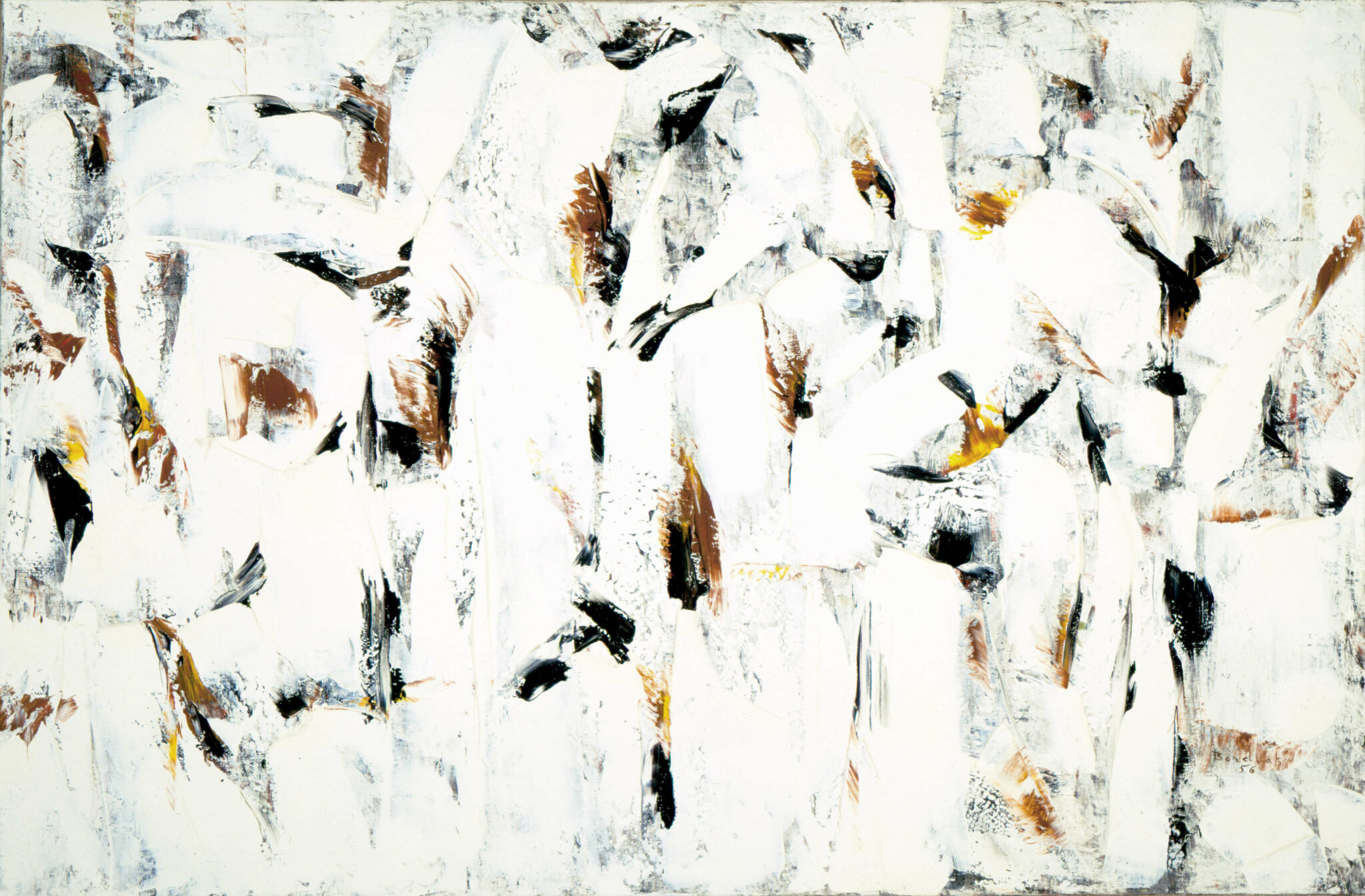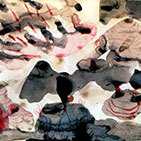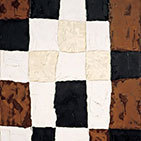Blossoming 1956

Paul-Émile Borduas, Blossoming (Épanouissement), 1956
Oil on canvas, 129.9 x 195 cm
Musée d’art contemporain de Montréal
Paradoxically, this painting, created soon after Borduas settled in Paris, overtly expresses an adherence to what the critic Clement Greenberg calls “American-type painting.” In Paris Borduas felt more and more American, or at least North American, and less French; it had taken a move to France for him to become aware of this. Blossoming is testimony to the impact that New York painting had had on Borduas, and it distances him definitively from automatism as it was defined in the 1940s. This is not to say that Borduas renounces non-preconception in his painting; rather, this time the adventure follows a different compass.
A true “all-over” painting—with no hierarchy among the elements and no major focal point—Blossoming gives the impression that it might easily continue beyond the edges of the canvas, or that even a fragment of the painting could create the same effect as the entire work. Greenberg uses the term all-overness in his attempt to distinguish from the European tendency to compose a painting by giving more or less importance to the elements within it—such as the opposition between the centre and the periphery in the paintings of Georges Mathieu (1921–2012)—and by drawing attention to details considered the most important, such as the figures in the work of Jean Dubuffet (1901–1985). Greenberg believed that modern European painting, by refusing to challenge its attachment to the well-composed image, gave way in prominence to the New York school of painting, which would henceforth occupy the place previously occupied by the Paris school during the first half of the twentieth century.
Blossoming was acquired by Gisèle and Gérard Lortie, collectors and friends of Borduas, at his Paris studio in February 1958.

 About the Author
About the Author
 More Online Art Books
More Online Art Books
 Acknowledgements
Acknowledgements